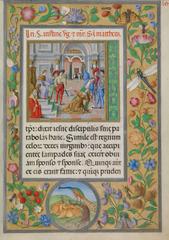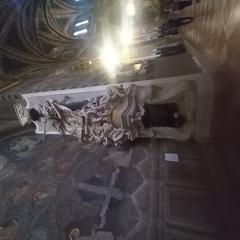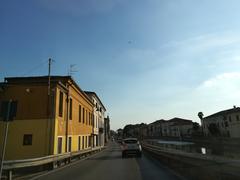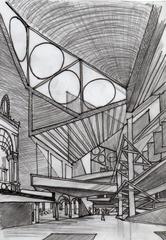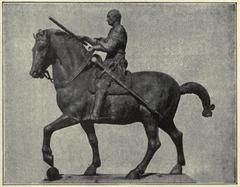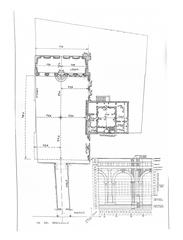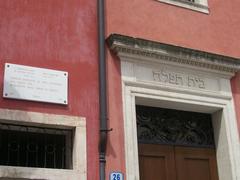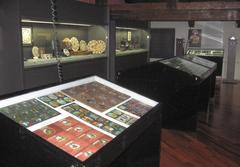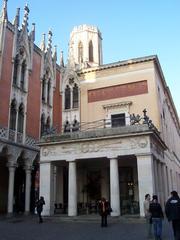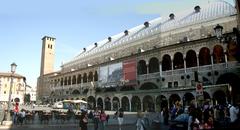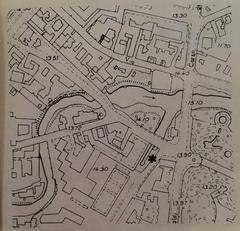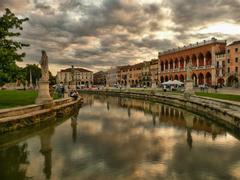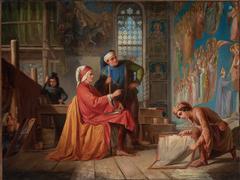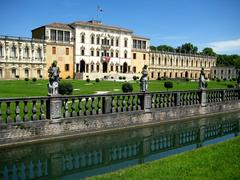Comprehensive Guide to Visiting Dipartimento di Farmacia, Padua, Italy
Date: 01/08/2024
Introduction
The Dipartimento di Farmacia at the University of Padua represents a significant pillar in the rich tapestry of this historic institution. Established in 1222, the University of Padua is among the oldest universities in the world, founded by scholars seeking greater academic freedom (NCBI). Over centuries, it thrived under the influence of the Republic of Venice, becoming a beacon of academic excellence and research. The Renaissance era was particularly transformative, ushering in a golden age for the university’s medical school, and cementing its legacy as a cradle of modern medicine (NCBI). The Botanical Garden of Padua, established in 1545, further underscores this legacy, being the world’s oldest academic botanical garden and a UNESCO World Heritage Site (Every Steph). Today, the Dipartimento di Farmacia continues to embody the university’s enduring commitment to academic freedom, research, and innovation, making it a must-visit for those interested in the history of medicine and pharmaceutical sciences.
Table of Contents
Historical Background of Dipartimento di Farmacia, Padua, Italy
Origins and Early Development
The Dipartimento di Farmacia at the University of Padua is deeply rooted in the rich history of the University itself, which was founded in 1222 by scholars and professors seeking greater academic freedom (NCBI). The city of Padua, known for its cultural richness and liberal schools, provided an ideal environment for the new university.
Influence of the Republic of Venice
In 1404, Padua came under the rule of the Republic of Venice. The Venetian administrators recognized the importance of the University of Padua and decided to enhance its quality, transforming it into the principal center of teaching and research within the Republic while maintaining its hallmark of academic freedom (NCBI). This period saw a significant increase in research activities, with the Republic of Venice attracting some of the best professors of the time and ensuring their freedom in research and teaching.
Renaissance and the Golden Age
The Renaissance, spanning from the 14th to the 17th centuries, marked a golden age for the University of Padua, particularly its Medical School. This era was characterized by a revival of classical Greek and Roman texts and philosophies. The Medical School was structured into five main chairs: theoretical medicine, practical medicine, anatomy and surgery, botany, and semeiotic (NCBI). Each chair had Ordinary and Extraordinary positions, with the latter reserved for teachers with some experience in teaching.
Contributions to Modern Medicine
Over the centuries, the University of Padua has been a significant contributor to the development of modern medicine. It has hosted many influential physicians and scientists, including Nicolaus Copernicus, Galileo Galilei, and Elena Cornaro Piscopia, the first woman to receive a doctorate degree in the western world (NCBI). The university’s commitment to academic freedom and excellence has made it a beacon of learning and innovation.
The Botanical Garden of Padua
The Botanical Garden of Padua, established in 1545, is the world’s oldest academic botanical garden still in its original location. It was founded to support the medical and botanical studies of the university’s students (Every Steph). The garden, now a UNESCO World Heritage Site, houses over 7,000 species and has played a crucial role in the development of botany and pharmacology. It was here that several economically important plants, such as sunflowers and potatoes, were first introduced to Italy (Rossi Writes).
Academic Freedom and Tolerance
The University of Padua has a long-standing tradition of academic freedom and tolerance. After the Catholic Reformation, it remained the only university under Catholic rule that was open to Protestant students and professors. This made it a favored destination for students from northern Europe, who were predominantly Protestant (NCBI). The Hall of Forty in the Bo Palace, which displays portraits of 40 of the most renowned foreign students, includes many from Protestant countries such as England, Poland, and Germany.
Notable Figures and Innovations
The University of Padua has been home to many notable figures who have made significant contributions to various fields. For instance, Prospero Alpini, a botanist and voyager, was the first European to describe the coffee plant and its medicinal properties (NCBI). The university’s anatomical theatre, where human and animal dissections were conducted, was a pioneering facility in the study of anatomy and surgery.
The Role of the Dipartimento di Farmacia
The Dipartimento di Farmacia, or Department of Pharmacy, at the University of Padua continues this legacy of excellence and innovation. It is an integral part of the university’s commitment to advancing medical and pharmaceutical sciences. The department benefits from the university’s rich history and its ongoing dedication to academic freedom and research excellence.
Visitor Tips
For those planning to visit the Dipartimento di Farmacia and the University of Padua, here are some tips to make the most of your experience:
- Book in Advance: Popular sites like the Scrovegni Chapel and Palazzo Bo require advance booking. Ensure you secure your tickets early to avoid disappointment (Rossi Writes).
- Visiting Hours: The Dipartimento di Farmacia has specific visiting hours which can be checked on the official university website. It’s advisable to confirm these before planning your visit.
- Guided Tours: Consider joining a guided tour to gain deeper insights into the university’s history and its contributions to science and medicine. Tours often include visits to the anatomical theatre and other significant sites (Every Steph).
- Explore the Botanical Garden: Don’t miss the Botanical Garden, especially in spring and summer when it is in full bloom. The garden offers a peaceful escape and a chance to see a variety of plant species (Sacred Wanderings).
- Caffè Pedrocchi: After exploring the university, relax at Caffè Pedrocchi, a historic café known for its unique atmosphere and delicious coffee (Every Steph).
FAQ
What are the visiting hours for the Dipartimento di Farmacia?
Visiting hours for the Dipartimento di Farmacia vary, so it’s best to check the official University of Padua website for the most current information.
How can I purchase tickets for the University of Padua?
Tickets for popular sites like the Scrovegni Chapel and Palazzo Bo can be purchased online through the official university website or authorized ticket vendors.
What are some nearby attractions in Padua?
Nearby attractions include the Scrovegni Chapel, Palazzo Bo, the Botanical Garden, and the historic Caffè Pedrocchi.
Stay Up to Date
For the latest updates, download our mobile app Audiala, check out other related posts, or follow us on social media.
By understanding the historical significance and contributions of the Dipartimento di Farmacia and the University of Padua, visitors can appreciate the profound impact this institution has had on the world of science and medicine.
Conclusion
Visiting the Dipartimento di Farmacia at the University of Padua offers a unique window into the profound historical and cultural heritage of one of the world’s oldest universities. From its origins in 1222 to its pivotal role during the Renaissance and beyond, the university has been a cornerstone of scientific and medical advancements. Notable figures like Galileo Galilei and Elena Cornaro Piscopia, the first woman to receive a doctorate, have walked its halls, contributing to its illustrious legacy (NCBI). The Botanical Garden, a UNESCO World Heritage Site, remains a testament to the university’s longstanding dedication to botanical and pharmacological studies (Every Steph). For visitors, the Dipartimento di Farmacia not only provides a rich educational experience but also a glimpse into the historical evolution of modern medicine. Whether you are a prospective student, researcher, or tourist, your visit will be enriched by the deep academic traditions and the vibrant cultural milieu of Padua (Rossi Writes).
References
- NCBI, 2014, NCBI
- Every Steph, 2023, Every Steph
- Rossi Writes, 2023, Rossi Writes
- University of Padua, 2023, University of Padua
- Sacred Wanderings, 2023, Sacred Wanderings
- Veronika’s Adventure, 2023, Veronika’s Adventure
